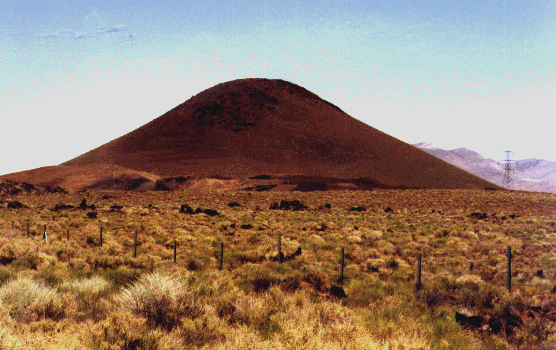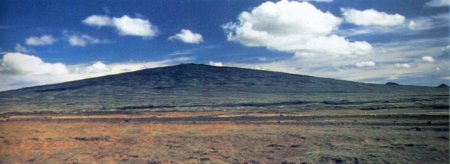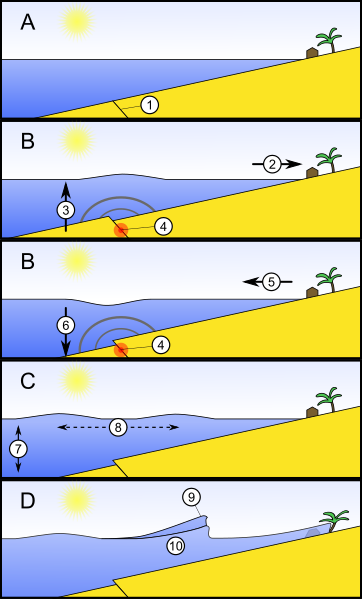Hi today I am blogging about Volcanoes! Volcanoes are the Earth's creators and destroyers. You are probably thinking how can a volcano be a creator and destroyer. Well you will learn about that and how a volcano is formed,what causes it to erupt and what types of volcanoes there are.
Here are two pictures of volcanoes.(please note that these volcanoes are not real)
First,there are three ways a volcano can be formed. The first way a volcano is called a Convergent boundary. Convergent boundaries cause two plates collide and one goes under the other. When one plate falls under another it starts to melt down into magma. The plate is usually the oceanic plate that goes under the other plate.
Here is a picture of a convergent boundary.

The second way a volcano can be formed is in a Divergent boundary. In a Divergent boundary the two plates move away from each other because of the magma from the mantle. Then the magma cools and becomes part of the crust and the cycle starts again.
Here is a picture of a Divergent boundary.
Here is a picture of a hot spot volcano.
Most volcanoes are found around the Ring of Fire. The only time a volcano is not on the ring of fire is when a hot spot occurs. The Ring of Fire is a bunch of volcanoes that are all around the Pacific plate.
Here is a picture of the Ring of Fire.
Next is the different types of volcanoes about the different types of volcanoes. The first type of volcanoes are called Shield volcanoes. Shield volcanoes are big and have smooth gentle slopes that were formed by basaltic lava. They are usually found around Divergent boundaries and hot spots in the ocean.
Here is a picture of a shield volcano.
Now for the Composite volcanoes. Composite volcanoes are very tall and steep sided volcanoes. They are formed by explosive eruptions. They are usually found around Convergent boundaries.
Here is a picture of a Composite volcano.

The last one is the Cinder cone volcano. Cinder cone volcanoes are very dangerous. They are like super volcanoes because of how much lava,rocks and volcanic ash. Volcanic ash is a bunch of dust,smoke and derbies that fly out of a volcano. Lava is the molten rock that is on the surface. The molten rock is called magma only when it is still in the mantle.
Here is a picture of a Cinder cone volcano.

Next is how do you determine the eruption style of a volcano. You can determine it by it's magma chemistry. I mean like the viscosity of the lava. Viscosity means a liquids resistance to flow. If something has low viscosity means that it flows easily like warm maple syrup. If something has high viscosity it means that it does not flow easily.
 The last thing in this blog is how are volcanoes are classified. Volcanoes are classified by their shape and their size. If a volcano is small and steep sided it is classified as a Cinder cone volcano. If a volcano is big and not steep sided it is classified as a shield volcano. If a volcano is tall and steep sided it is a composite volcano.
The last thing in this blog is how are volcanoes are classified. Volcanoes are classified by their shape and their size. If a volcano is small and steep sided it is classified as a Cinder cone volcano. If a volcano is big and not steep sided it is classified as a shield volcano. If a volcano is tall and steep sided it is a composite volcano.Click HERE for more info
Click HERE for more info
Click HERE for more info
Hope you enjoyed my blog.
Here are some pictures of stick figures.
BYE!












